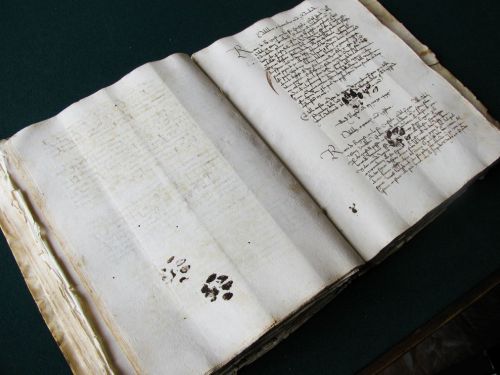Your personal Tumblr journey starts here
History - Blog Posts

日本の考古学と科学思想の歴史。
第2章 :
日本の考古学者の皆さん、哲学的観点から見た新しい日本考古学へようこそ。 — 前の章で、特定のトピック、歴史、考古学、人類学について質問されるとき、たとえば「私たちの先祖は誰ですか?」とコメントしました。 そして彼らはどうやって X 場所にたどり着いたのでしょうか? 考古学自体が 19 世紀末の 1877 年に登場したとき、1884 年に人類学研究所が、1895 年に日本考古学協会が誕生したことについて触れます。 - 19 世紀の人なら、「私は誰ですか、どこから来たのですか?」と尋ねるでしょう。 ドイツ語、中国語、ノルウェー語、日本語などを尋ねることができます。 この種の質問は今日に至るまで答えられていません。 歴史学と考古学はそれらに答えを与えておらず、今日の他の分野でさえさらに多くのことを知っていますが、道のりはまだ長いです。 19世紀の日本、特にその終わり頃は、自分たちの起源を知りませんでした。 1980 年代の日本の科学者なら誰でも、最初の日本人入植者は誰だったのか疑問に思うでしょう。 ここに定住するきっかけは何ですか? 現在、最初の入植者は約 3 万年前に到着したことが知られていますが、彼らだけだったのでしょうか? この諸島には、海面が現在より 120 倍も低かったため、中国と朝鮮の半島を北と南から通ってやって来た最初の入植者がいたことが知られています。 日本人は非常に古い本を 2 冊持っていることが知られており、1 冊は西暦 711 年、もう 1 冊は西暦 722 年のものです。 最初の書紀は古事記と呼ばれ、二番目の日本書紀は、神 (カミスと呼ばれる) による西暦 660 年からの日本の建国について語っています。この日本の神聖な起源の概念は、第二次世界大戦 (第二次世界大戦) まで続きます。 これら 2 冊の本は、ヨーロッパではギリシャとローマに遡る最古の本に相当します。 - 気に入っていただければ幸いです。今後の投稿でお会いしましょう。良い一週間をお過ごしください。
HISTORY OF JAPANESE ARCHEOLOGY AND SCIENTIFIC THOUGHT.
Episode 2:
Welcome, Japanesearchaeologicalists, to a new installment of Japanese archaeology, seen from a philosophical point of view. Having said that, get comfortable and let's begin.
—
In the previous chapter, we commented that when we are asked questions about certain topics, history, archeology and anthropology, for example: Who were our ancestors? And how did they get to X place? We mention, when archeology itself emerged at the end of the 19th century, 1877, the origin of the anthropology laboratory in 1884 and in 1895 the Japanese archeology society.
-
A person from the 19th century would ask: Who am I, where do I come from? We could ask a: German, Chinese, Norwegian, Japanese, etc. These types of questions remain unanswered to this day. History and archeology have not given them an answer, even other disciplines today know much more, but there is still a long way to go. Japan during the 19th century, especially the end of that period, did not know its own origin. Any Japanese scientist in the 1980s would wonder who were the first Japanese settlers? What led you to settle here? Currently, it is known that the first settlers arrived about 30,000 years ago. Were they the only ones? It is known that the archipelago was inhabited by other inhabitants who were the first settlers. They arrived through the peninsula of China and Korea, both from the north and the south, since the sea level was 120 times lower than today. It is known that the Japanese have two very old books, one dates from 711 and the other from 722 AD. The first is called Kojiki and the second Nihonshoki, the Kojiki tells of the founding of Japan from the year 660 AD by the gods (called kamis), this concept of the divine origin of Japan would last until World War II (2ww). These two books would be the equivalent in Europe of the oldest dating back to Greece and Rome.
-
I hope you liked it and see you in future posts, have a good week.

HISTORIA DE LA ARQUEOLOGÍA JAPONESA Y EL PENSAMIENTO CIENTÍFICO.
Capítulo 1: Sean bienvenidos, japonistasarqueológicos, a una nueva entrega de arqueología nipona, vista desde un punto de vista filosófico, una vez dicho esto pónganse cómodos qué empezamos. — Seguramente, todos nos hacemos las mismas preguntas cuando se nos pregunta determinados temas de historia y de arqueología. ¿Quiénes eran nuestros antepasados y por qué llegaron a este determinado lugar y no a x? ¿De qué medios disponían para lograr determinadas hazañas históricas? En nuestro caso nos centraremos en dos preguntas determinadas ¿Quiénes fueron los primeros pobladores del archipiélago japonés? Y de ver cómo dicha idea ha llegado a nuestros días sin una respuesta clara, ya que tanto arqueólogos, historiadores, antropólogos, entre otros, han intentado dar una posible respuesta a una de las mayores incógnitas de la historia de la arqueología japonesa. — ¿Cuándo surgió la arqueología japonesa propiamente dicha? La historia de Japón es un tanto complicada, debido a que la ciencia propiamente dicha no nace hasta finales del siglo XIX, para ser más exactos 12 de abril 1877 ¿Cuándo surgen las sociedades arqueológicas, antropológicas y el laboratorio de antropología en Tokio? Además, tuvieron mucha influencia de gente tanto de Europa como de Estados Unidos, ya que tenían una gran influencia para aquel momento y mencionaremos algunos y a uno de los arqueólogos más destacados del mundo japonés. — ¿Cuándo surgen las sociedades arqueológicas, antropológicas y el laboratorio de antropología en Tokio? Para responder a dicha pregunta: A partir de 1880,vino un proceso gradual de institucionalización a la arqueología, generando un nuevo marco académico y universitario: Dando lugar al nacimiento de la Sociedad Antropológica de Tōkyō 1884, se creó el Laboratorio de Antropología en la Universidad de Tōkyō 1888,la fundación de la Sociedad Arqueológica se fundó en Japón en 1895. — Espero que os haya gustado y nos vemos en próximas publicaciones que pasen una buena semana.
HISTORY OF JAPANESE ARCHEOLOGY AND SCIENTIFIC THOUGHT.
Chapter 1: Welcome, Japanesearchaeologicalists, to a new installment of Japanese archaeology, seen from a philosophical point of view. Having said that, get comfortable and let's begin. — Surely, we all ask ourselves the same questions when we are asked certain topics in history and archeology. Who were our ancestors and why did they arrive at this certain place and not x? What means did they have to achieve certain historical feats? In our case we will focus on two specific questions: Who were the first settlers of the Japanese archipelago? And to see how this idea has reached our days without a clear answer, since archaeologists, historians, anthropologists, among others, have tried to give a possible answer to one of the biggest unknowns in the history of Japanese archaeology. — When did Japanese archeology itself emerge? The history of Japan is somewhat complicated, because science itself was not born until the end of the 19th century, to be more exact April 12, 1877 When did the archaeological and anthropological societies and the anthropology laboratory emerge in Tokyo? In addition, they had a lot of influence from people from both Europe and the United States, since they had a great influence at that time and we will mention some of them and one of the most prominent archaeologists in the Japanese world. — When did the archaeological and anthropological societies and the anthropology laboratory emerge in Tokyo? To answer this question: Starting in 1880, a gradual process of institutionalization of archeology came, generating a new academic and university framework: Giving rise to the birth of the Tōkyō Anthropological Society 1884, the Anthropology Laboratory was created at the University from Tōkyō 1888, the foundation of the Archaeological Society was founded in Japan in 1895. — I hope you liked it and see you in future posts, have a good week.
日本の考古学と科学思想の歴史。
第1章: 日本の考古学者の皆さん、哲学的観点から見た新しい日本考古学へようこそ。 — 確かに、歴史や考古学の特定のトピックを尋ねられたとき、私たちは皆同じ質問をするでしょう。 私たちの祖先は誰でしたか、そしてなぜ彼らは x ではなくこの特定の場所に到着したのでしょうか? 彼らは特定の歴史的偉業を達成するためにどのような手段を必要としたのでしょうか? 私たちの場合は、2 つの具体的な質問に焦点を当てます。日本列島の最初の入植者は誰ですか? そして、考古学者、歴史家、人類学者などが、日本の考古学史上最大の未知の一つに可能な答えを与えようとして以来、この考えが明確な答えがないまま、どのようにして現代に至ったのかを見てみましょう。 — 日本の考古学自体はいつ頃から生まれたのでしょうか? 日本の歴史はやや複雑です。科学そのものが誕生したのは 19 世紀末、より正確には 1877 年 4 月 12 日です。考古学人類学協会と人類学研究所が東京に誕生したのはいつですか? さらに、彼らは当時大きな影響力を持っていたため、ヨーロッパとアメリカの両方の人々から多くの影響を受けていました。彼らの一部と日本の世界で最も著名な考古学者の一人についても言及します。 — 東京に考古人類学会や人類学研究室が誕生したのはいつですか? この質問に答えるには、1880 年から考古学の制度化が段階的に進み、新しい学問と大学の枠組みが生まれました。1884 年に東京人類学会が誕生し、1888 年に東京で人類学研究室が大学に設立されました。考古学協会の財団は 1895 年に日本で設立されました。 — 気に入っていただければ幸いです。今後の投稿でお会いしましょう。良い一週間をお過ごしください







Capitulo 1:ヨーロッパの雰囲気が漂う五稜郭/Goryokaku a hallmark with European airs.
-
Sean bienvenidos a una nueva entrega de cultura e historia japonesa, en este caso vamos a hablar sobre Goryokaku, localizado en Hakodate en la prefectura de Hokkaido al norte de la isla de Honshu.
-
Toponimia de Hokkaido en, el siglo XIX se llamaba Ezo, fue el último reducto del shogunato contra el nuevo orden creando una república (1868-1869). Hay que destacar que Japón estuvo cerrado al mundo durante 260 años de su historia (1603-1868), este periodo se le conoce como periodo Edo, bajo el régimen militar Tokugawa.
-
En 1854 finalizaron los tratados de amistad con Estados Unidos, Gran Bretaña, Rusia. Hakodate se convirtió en una ciudad portuaria abierta al mundo exterior y en 1858, concluyendo el tratado comercial y al año siguiente se convirtió en puerto comercial. Hisaburo Takeda, estudio en Europa y se formó en fortalezas tipo estrelladas de traza italiana, en 1864 se completaron las contribuciones de la fortaleza.
-
Espero que os guste y nos vemos en próximas publicaciones.
-
Welcome to a new installment of Japanese culture and history, in this case we are going to talk about Goryokaku, located in Hakodate in the Hokkaido prefecture north of the island of Honshu.
-
Toponymy of Hokkaido in the 19th century was called Ezo, the last stronghold of the shogunate against the new order creating a republic (1868-1869). It should be noted that Japan was closed to the world for 260 years (1603-1868), this period is known as the Edo period, under the Tokugawa military regime.
-
In 1854 the friendship treaties with the United States, Great Britain, and Russia ended. Hakodate became a port city open to the outside world and in 1858, concluding the commercial treaty and the following year it became a commercial port. Hisaburo Takeda, studied in Europe and trained in Italian star-type fortresses, in 1864 the contributions of the fortress were completed.
-
日本の文化と歴史の新しい記事へようこそ。今回は、本州の北、北海道の函館にある五稜郭について話します。
-
19 世紀の北海道の地名は蝦夷と呼ばれ、共和制を樹立する新秩序(1868~1869 年)に対抗する幕府の最後の拠点でした。 日本は 260 年間 (1603 年から 1868 年まで) 鎖国していたことに注意してください。この期間は、徳川軍事政権下の江戸時代として知られています。
-
1854 年にアメリカ、イギリス、ロシアとの友好条約が終了しました。 函館は対外に開かれた港湾都市となり、1858年に通商条約を締結し、翌年には商業港となりました。 武田久三郎はヨーロッパに留学し、イタリアの星型要塞で訓練を受け、1864 年に要塞の建設を完了しました。
source/ソース:photos internet/写真インターネット




Sean bienvenidos mis queridos fanáticosarqueológicos a una nueva entrega de prehistoria Japónesa en esta ocasión nos trasladamos a la pregunta ¿Cuándo se originó el sintoísmo?. - Aunque parezca raro es una religión que se conformo durante el periódo Jōmon (17.500-300), para ser exactos a finales de dicho período y continua hasta nuestros días los dioses del sintoísmo, se les llama Kamis ( dios) ya que para los japoneses todo tenía un dios las montañas, ríos. - El sintoísmo tiene influencias chinas, coreanas de hay que tenga similitudes con el taoísmo, ¿Qué dos libros recogen la categoría de los Kamis? Son el Kojiki(713d.c) y el Nihonshoki(720d.c). - Espero que os guste y nos vemos en una próxima públicacion un cordial saludo. 🇯🇵 私の愛する考古学ファンを日本の先史時代の新作に歓迎します。今回は、神道がいつ始まったのかという質問に移ります。 - 奇妙に思えるかもしれませんが、縄文時代(17500-300)に形成された宗教であり、正確にはその時代の終わりに、今日まで神道の神であり、カミス(神)と呼ばれています。 日本人にとって、山や川にはすべて神がいました。 - 神道は中国、韓国の影響を受けており、道教との類似点があります。 カミスのカテゴリーに分類される2冊の本は何ですか? こうじき(713d.c)と日本書紀(720d.c)です。 - よろしくお願いします。次の出版物で心からのご挨拶を申し上げます。 🇬🇧 Welcome my dear archaeological fans to a new installment of Japanese prehistory, this time we move to the question, when did Shintoism originate? - Although it may seem strange, it is a religion that was formed during the Jōmon period (17500-300), to be exact at the end of that period and continues to this day the gods of Shintoism, they are called Kamis (god) since for the Japanese everything the mountains and rivers had a god. - Shintoism has Chinese, Korean influences, and there are similarities with Taoism. What two books are classified under the category of the Kamis? They are the Kojiki (713d.c) and the Nihonshoki (720d.c). - I hope you like it and see you in a next publication a cordial greeting.
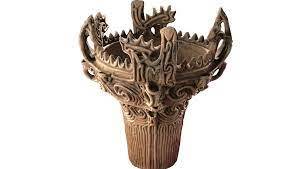



Introducción a la cerámica Jōmon: - Tipos cerámica Jōmon se dividen en 5 : 1 fukabachi 2 hachi 3 asabachi 4 tsubo 5 chuko - ¿Cónocian algúnos de estos tipos? os deseo un feliz día un cordial saludo. - Introduction to Jōmon Pottery: - Jōmon ceramic types are divided into 5: 1 fukabachi 2 hachi 3 asabachi 4 tsubo 5 chuko - Do you know any of these guys? I wish you a happy day, a cordial greeting. - 縄文土器の紹介: - 縄文土器は次の5種類に分類されます。 深鉢 1個 2ハチ 3アサバチ 4坪 5中子 - この人たちを知っている人はいますか? 幸せな 一日をお祈りします。心からのご挨拶を申し上げます。


Sean bienvenidos, a una nueva aclaración, arqueológica-histórica, en esta ocasión aclararemos y desmentir errores aplicados a la arqueología .¿Por qué la cerámica más antigua se encuentra en Asia y no en el mediterráneo?. - En cierto modo, muchas de las cosas más antiguas se encuentran en mesopotamia, pero no todo ya que muchas cosas surgieron en china y japón. En este caso, hablaremos de la cerámica, los vestigios más antiguos los podemos encontrar en el archipiélago nipón de hace 16.500 años de antigüedad durante el periodo Jōmon(Neolítico japonés lo que equivaldría al neolítico Europeo), eso era lo que se sabía hasta ahora, pero restos arqueológicos rescatados en una cueva de china, datan de una friolera de 20.000años, se tenía entendido que la cerámica apareció hace 10.000 años aproximadamente, ¿Por que se nos ocultan estos datos?, pues muy sencillo, porque no concuerdan con la recta cronológica estipulada, además de no generar interés para su estudio. - La foto número 1, son los restos de la cerámica china. - La foto número 2 es la cerámica de la cultura Jōmon. - Cualquier aportación siempre es bienvenida, ya que esta publicación sirve como aclarar ideas y para debatir. os deseo un buen día y un fuerte abrazo. - 新しい考古学と歴史の解明へようこそ。今回は、考古学に適用された誤りを明らかにし、否定します。なぜ最も古いセラミックが地中海ではなくアジアで見つかったのでしょうか。 - ある意味で、最も古いものの多くはメソポタミアで発見されていますが、中国と日本で発生したものほど多くはありません。今回は陶磁器についてお話しますが、16、500年前の縄文時代(ヨーロッパの新石器時代に相当する日本の新石器時代)の日本列島で最も古い遺跡がありますが、これは今まで知られていましたが、中国の洞窟で救出された考古学的遺跡は、なんと2万年前のもので、約1万年前に陶磁器が登場したと理解されていましたが、なぜこれらのデータが私たちから隠されているのでしょうか。直線と一致しないため、非常に単純です。その研究への関心を生み出さないことに加えて、年代順に規定された。 - 写真1は中国の陶器の残骸です。 写真2は縄文文化の陶器です。 この投稿は説明と議論として役立つので、どんな入力でもいつでも歓迎します。良い一日と大きな抱擁をお祈りします。 - Welcome to a new archaeological-historical clarification, this time we will clarify and deny errors applied to archeology. Why is the oldest ceramic found in Asia and not in the Mediterranean ?. - In a way, many of the oldest things are found in Mesopotamia, but not all as many things arose in China and Japan. In this case, we will talk about ceramics, the oldest remains can be found in the Japanese archipelago 16,500 years ago during the Jomon period (Japanese Neolithic, which would be equivalent to the European Neolithic), that was what was known until now, but archaeological remains rescued in a cave in China, dating from a whopping 20,000 years, it was understood that the ceramics appeared approximately 10,000 years ago, why are these data hidden from us ?, Well very simple, because they do not agree with the straight line stipulated chronological, in addition to not generating interest for its study. - Photo number 1 is the remains of Chinese pottery. Photo number 2 is the pottery of the Jomon culture. Any input is always welcome, as this post serves as clarification and discussion. I wish you a good day and a big hug.






Sean bienvenidos japonistasarqueologicos, a una nueva entrega de arqueología nipona, en esta ocasión os enseñaré algunos objetos recuperados del yacimiento del toro, entre otros — Los bienes muebles: son todos aquellos materiales que están hechos de madera y hueso que rara vez se conservan, a no ser que se den las condiciones óptimas como es en este caso. Pondré en un orden sucesivo las fotos de los objetos de antes de ser restaurados y una vez ya restaurados, para esta labor se ha tardado 14 años desde 2018-2021.
— Espero que os haya gustado y nos vemos en próximas publicaciones, que pasen una buena semana. - ようこそ、ジャポニスタサルケオロジコスの日本考古学の新しい回へ、この機会に私はあなたに、とりわけ、雄牛のサイトから回収されたいくつかのオブジェクトを表示します。 - 可動遺物:木や骨で作られたもので、今回のように最適な条件でない限り、保存されることはほとんどない。2018年から2021年までの14年間を費やしたこの作業のために、修復される前と、すでに修復されたものの写真を順を追って並べます。
- お気に召していただけたなら幸いである。 - Welcome japonistasarqueologicos, to a new installment of Japanese archaeology, on this occasion I will show you some objects recovered from the site of the bull, among others - Movable goods: these are all those materials made of wood and bone that are rarely preserved, unless the conditions are optimal as in this case. I will put in a successive order the photos of the objects before being restored and once already restored, for this work it has taken 14 years from 2018-2021.
- I hope you liked it and see you in future publications, have a good week.
More information: https://www.shizuoka-toromuseum.jp/zhcn/




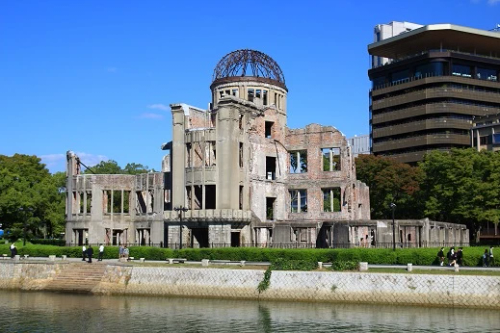
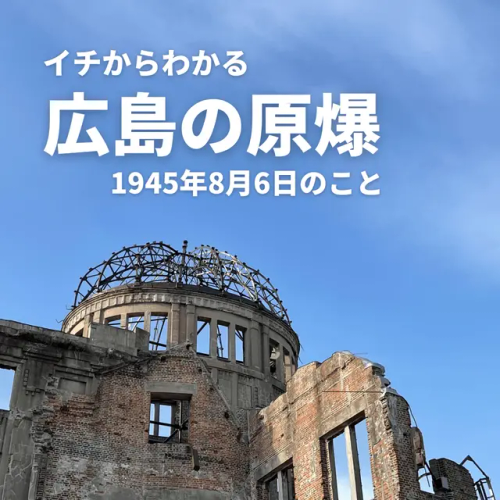

Sean bienvenidos, japonistasarqueologicos a una nueva entrega de historia nipona en la que os pongo imágenes de los epicentros tras los bombardeos del 6 y 9 de agosto, una vez dicho esto pónganse cómodos que empezamos. - Antes que nada me gustaría poner un poco de contexto histórico para poder entender la situación, Japón estaba perdiendo la guerra y estaban buscando formas desesperadas para frenar el avance norteamericano que se cernía sobre el país del sol naciente. Recurrirán a los kamikazes vía aérea y terrestre de hecho se estaba preparando en Japón unas fuerzas de defensa con mujeres, tras la batalla de Okinawa en los 82 días de combate murieron cerca de 100.000 soldados japoneses, más de 12.000 estadounidenses y al menos 100.000 civiles locales, incluidos cientos que fueron obligados a matarse a sí mismo, también se perdería el Yamato en el último kamikaze. - Ciudad de Hiroshima:6 de agosto 1945, Little Boy fue arrojado desde el Enola Gay, matando a más de 70.000 personas al instante y muchas más morirían consecuencia de la radiación. Ciudad de Nagasaki: 9 de agosto 1945, Fat Man, fue la otra bomba atómica lanzada por el mismo avión, causando la muerte de 49.000 personas el día de la explosión. - Conclusión: Los costos fueron terribles, ya que las propias consecuencias lo fueron aún más, espero que no se tengan más bombas atómicas, ni de cualquier otro tipo, el ser humano debería aprender de los errores de la historia para que se acabaran las guerras. Publicación en memoria de todos los que murieron por las bombas atómicas. - Esperó que os haya gustado y nos vemos en próximas publicaciones que pasen una buena semana. - 日本の考古学者の皆さん、ようこそ日本史の新連載へ。8月6日と9日の原爆投下後の爆心地の画像をお届けします。 - まず最初に、この状況を理解するために歴史的背景を説明したいと思う。日本は戦争に負け、日出ずる国に迫りつつあったアメリカの進撃を食い止めるための絶望的な方法を模索していた。沖縄戦の後、82日間の戦闘で10万人近くの日本兵が死に、1万2000人以上のアメリカ兵と、自殺を余儀なくされた数百人を含む少なくとも10万人の民間人が亡くなった。 - 広島市:1945年8月6日、エノラ・ゲイからリトルボーイが投下され、7万人以上が即死。長崎市:1945年8月9日、ファットマンが同じ飛行機から投下され、爆発当日に49,000人が死亡した。 - 結論:原爆投下は、その結果そのものもさることながら、その代償もまた恐ろしいものであった。 私は、原爆や他のいかなる種類の爆弾もこれ以上投下されないことを願うとともに、人類が歴史の過ちから学び、戦争がなくなることを願っている。原爆で亡くなられたすべての方々を悼んで。 - お気に召していただけたなら幸いである。 良い一週間を. - Welcome, Japanese archaeologists, to a new instalment of Japanese history in which I bring you images of the epicentres after the bombings of 6 and 9 August, so make yourselves comfortable and let's get started. - First of all I would like to give some historical context to understand the situation, Japan was losing the war and they were looking for desperate ways to stop the American advance that was looming over the land of the rising sun. They resorted to kamikazes by air and land in fact they were preparing in Japan a defence force with women, after the battle of Okinawa in the 82 days of combat nearly 100,000 Japanese soldiers died, more than 12,000 Americans and at least 100,000 local civilians, including hundreds who were forced to kill themselves, they would also lose the Yamato in the last kamikaze. - Hiroshima City: 6 August 1945, Little Boy was dropped from the Enola Gay, killing over 70,000 people instantly and many more would die from radiation. Nagasaki City: 9 August 1945, Fat Man, was the other atomic bomb dropped from the same plane, killing 49,000 people on the day of the explosion. - Conclusion: The costs were terrible, as the consequences themselves were even more so. I hope that there will be no more atomic bombs, or any other type of bomb, and that mankind should learn from the mistakes of history so that wars will end. Publication in memory of all those who were killed by atomic bombs. - I hope you liked it and see you in future publications. Have a good week.


Sean bienvenidos, japonistasarqueológicos a una nueva entrega, de arqueología en la que comentaremos, cómo era vivir hace 2000 años en el período Yayoi, una vez dicho esto pónganse cómodos que empezamos. — En el emplazamiento, podréis vivir la experiencia de como si estuvierais en las viviendas, de dicho periodo, las recreaciones de los almacenes y los santuarios de las ruinas de toro se han reducido a una escala de aproximada al 80 % las paredes representan la naturaleza, de la época y de su estilo de vida. Siéntete como si hubieras viajado en el tiempo al pueblo Toro del período Yayoi, con nuestra máquina del tiempo, ya que puede ser una experiencia inolvidable, para todas las edades, porque la vida no ha cambiado en 2000 a 3000 años. — Espero que os guste y nos vemos en próximas publicaciones, que pasen una buena semana.
-
日本の考古学者諸君、ようこそ考古学の新連載へ。2000年前の弥生時代の暮らしとはどんなものだったのかについて語り合おう。 - 遺跡では、当時の住居がどのようなものであったかを体験することができます。トロ遺跡の倉庫や神社を約80%の縮尺で再現し、壁で当時の自然や生活様式を表現しています。まるでタイムマシンで弥生時代の登呂集落にタイムスリップしたかのような体験は、2000年から3000年経っても変わらない暮らしの中で、世代を問わず忘れられない思い出になることだろう。 - それでは、また次回もお楽しみに。
-
Welcome, Japanese archaeologists, to a new instalment of archaeology in which we will discuss what it was like to live 2000 years ago in the Yayoi period, so make yourselves comfortable and let's get started. - At the site, you can experience what it was like to live in the dwellings of that period, the recreations of the warehouses and shrines of the toro ruins have been reduced to a scale of about 80% and the walls represent the nature of the period and its lifestyle. Feel as if you have travelled back in time to the Toro village of the Yayoi period, with our time machine, as it can be an unforgettable experience, for all ages, because life has not changed in 2000 to 3000 years. - I hope you like it and see you in future publications, have a nice week.
詳しくは/more information:
https://www.shizuoka-toromuseum.jp/guide/admission/
Sean bienvenidos, japonistasarqueologicos a una nueva entrega de historia nipona en la que os explico la evolución del artefacto Tanegashima, una vez dicho esto pónganse cómodos, que empezamos. - Fue introducido por los portugueses en 1543, en pleno periodo Muromachi desde la isla que lleva su mismo nombre, el polvo negro químico fue inventado por los chinos en el siglo IX, se usaba para los fuegos artificiales, después se trasladó a otros ámbitos. - Se cuenta que cuando llegó a Japón, un herrero vendió a su hija para poder producir dicho artefacto, era un producto raro y poco efectivo, no todos los samuráis la utilizaban, ya que muchos preferían, todavía, las técnicas tradicionales más efectivas, además la consideraban un elemento deshonroso. El hecho más notable fue el 28 de junio de 1575 en Nagashino, en la Provincia de Mikawa. El clan de Oda Nobunaga se enfrentaba contra el clan Takeda conocido por su temible caballería, Oda Nobunaga emplearía unas empalizadas para proteger a sus soldados de las sucesivas cargas, en esta batalla se usaría el artefacto en masa. Esto lo podéis ver en el famoso videojuego de Total War: Shogun 2. - Esperó que os haya gustado y nos vemos en próximas publicaciones que pasen una buena semana. - 日本の考古学者の皆さん、種子島の遺物の変遷を説明する新しい日本史へようこそ。 - 室町時代中期の 1543 年に、同じ名前の島からポルトガル人によって導入されました。化学黒色火薬は 9 世紀に中国人によって発明され、花火に使用されましたが、その後他の用途に移りました。地域。 - 彼が日本に到着したとき、鍛冶屋はその工芸品を製造できるように娘を売ったと言われています。それは希少で非効率な製品でした。多くの武士が依然として最も効果的な伝統的な技術を好んだため、すべての武士がそれを使用したわけではありません。彼らはそれを考慮しました不名誉な要素。 最も注目すべき出来事は、1575 年 6 月 28 日に三河国長篠で起こった。 織田信長の一族は、恐ろしい騎兵で知られる武田家と対峙しました。織田信長は連続突撃から兵士を守るために柵を使用しました。この戦いでは、アーティファクトが一斉に使用されました。 これは、有名なビデオ ゲーム Total War: Shogun 2 で見ることができます。 - 気に入っていただければ幸いです。今後の投稿でお会いしましょう。良い一週間をお過ごしください。 - Welcome, Japanesearchaeologicalists, to a new installment of Japanese history in which I explain the evolution of the Tanegashima artifact. Having said that, make yourself comfortable, let's begin. - It was introduced by the Portuguese in 1543, in the middle of the Muromachi period from the island that bears the same name. The chemical black powder was invented by the Chinese in the 9th century. It was used for fireworks, then it moved to other areas. - It is said that when he arrived in Japan, a blacksmith sold his daughter to be able to produce said artifact. It was a rare and ineffective product. Not all samurai used it, since many still preferred the most effective traditional techniques. They considered it a dishonorable element. The most notable event was on June 28, 1575 in Nagashino, Mikawa Province. Oda Nobunaga's clan faced the Takeda clan, known for its fearsome cavalry. Oda Nobunaga would use palisades to protect his soldiers from successive charges. In this battle, the artifact would be used en masse. You can see this in the famous video game Total War: Shogun 2. - He hoped you liked it and see you in future posts, have a good week.
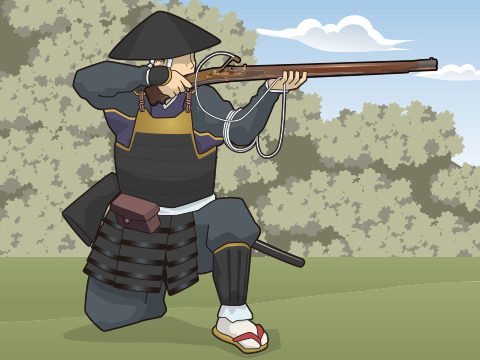

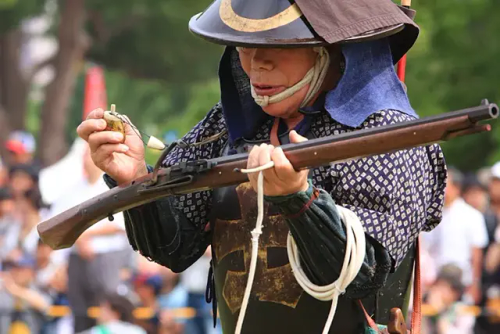
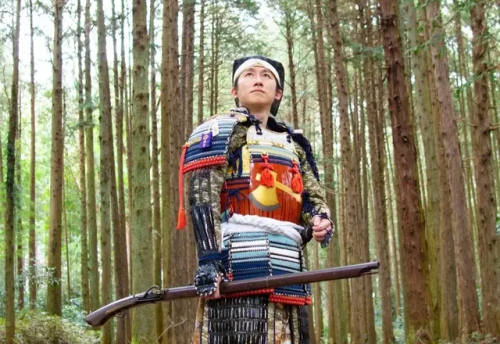
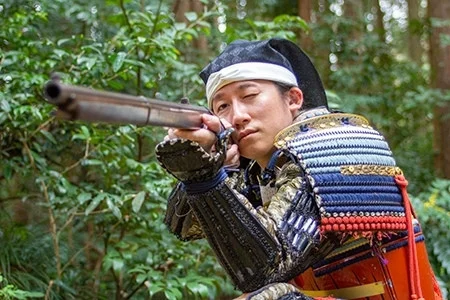

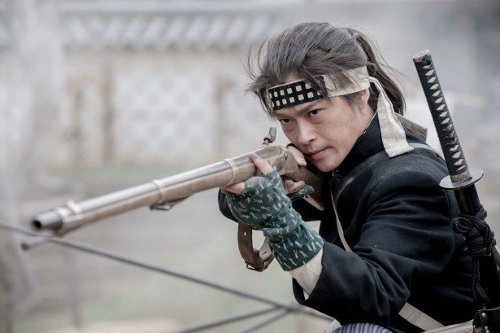





Sean bienvenidos, japonistasarqueológicos a una nueva entrega, de arqueología en la que comentaremos, como las Herramientas de hace 2000 años, nos revelan la vida en el período Yayoi, una vez dicho esto pónganse cómodos que empezamos. — Las herramientas posiblemente tuvieran la influencia de china, al igual que otras muchas cosas del país del sol naciente, os pondré imágenes del museo en para que podáis ver el itinerario no sólo de las herramientas sino lo que podéis encontrar en sus adentros, hay que recordar que muchos de esos objetos fueron desenterrados por las personas ya mencionadas anteriormente. — Espero que os guste y nos vemos en próximas publicaciones, que pasen una buena semana. - 日本の考古学者諸君、ようこそ考古学の新連載へ。2000年前の道具が弥生時代の生活をどのように明らかにしたかを議論する。 - 道具はおそらく中国の影響を受けたもので、その他にも日出ずる国の様々なものがあります。博物館の写真をお見せしますから、道具の行程だけでなく、その中から何が見つかるかも見てください。これらの物の多くは、上記の人々によって発掘されたことを覚えておいてください。 - それでは、また次の記事でお会いしましょう。 - Welcome, Japanese archaeologists, to a new installment of archaeology in which we will discuss how tools from 2000 years ago reveal life in the Yayoi period, so make yourselves comfortable and let's get started. - The tools were possibly influenced by China, as well as many other things from the land of the rising sun, I will show you pictures from the museum so you can see the itinerary not only of the tools but also what you can find inside them, remember that many of these objects were unearthed by the people mentioned above. - I hope you like it and see you in future posts, have a nice week.
-
More information: https://www.shizuoka-toromuseum.jp/zhcn/
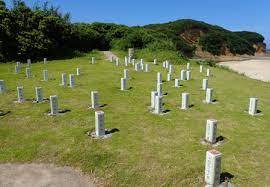



Sean bienvenidos, japonistasarqueológicos, a una nueva entrega de arqueología nipona, una vez dicho esto pónganse cómodos qué empezamos. - En esta ocasión vamos a hablar, de cómo se deformaba el cráneo de forma antropogénica en el sitio arqueológico de Hirota en Tanegashima, localizado en la prefectura de Kagoshima. El yacimiento data del periodo yayoi 400 al 250 d.c - La deformación craneal ya se daba en muchas culturas de América, con motivos religiosos y sociales y posiblemente aquí podremos hallar el mismo caso similar o parecido, al ser un hallazgo reciente todavía faltan muchos estudios para ello. ¿Qué opinan ustedes al respecto? ¿Conocían este lugar? - En el caso de las culturas Americanas, le ponían cuerdas para alargar el cráneo¿Practicaban las mismas actividades? Quien sabe lo que nos depara el futuro, esta publicación está hecha con intenciones científica-divulgativa para transmitir conocimiento al mundo. - Espero que os guste y nos vemos en próximas publicaciones, que pasen una buena semana.
-
Welcome, Japanese archaeologists, to a new installment of Japanese archaeology, having said that, make yourself comfortable and let's start.
-
On this occasion we are going to talk about how the skull was deformed in an anthropogenic way in the archaeological site of Hirota in Tanegashima, located in the Kagoshima prefecture. The site dates from the Yayoi period 400 to 250 AD
-
Cranial deformation already occurred in many cultures in America, for religious and social reasons and possibly here we can find the same or similar case, as it is a recent finding, many studies are still missing for it. What do you think about it? Did you know this place? - In the case of American cultures, they used ropes to lengthen the skull. Did they practice the same activities? Who knows what the future holds for us, this publication is made with scientific-informative intentions to transmit knowledge to the world. - I hope you like it and see you in future publications, have a good week.Welcome, Japanese archaeologists, to a new installment of Japanese archaeology, having said that, make yourself comfortable and let's start.
-
On this occasion we are going to talk about how the skull was deformed in an anthropogenic way in the archaeological site of Hirota in Tanegashima, located in the Kagoshima prefecture. The site dates from the Yayoi period 400 to 250 AD
-
Cranial deformation already occurred in many cultures in America, for religious and social reasons and possibly here we can find the same or similar case, as it is a recent finding, many studies are still missing for it. What do you think about it? Did you know this place?
-
In the case of American cultures, they used ropes to lengthen the skull. Did they practice the same activities? Who knows what the future holds for us, this publication is made with scientific-informative intentions to transmit knowledge to the world. - I hope you like it and see you in future publications, have a good week.
-
日本の考古学者の皆さん、日本の考古学の新しい記事へようこそ。そうは言っても、気を楽にして始めましょう。
-
今回は、鹿児島県種子島の広田遺跡で、人為的に頭蓋骨がどのように変形されたのかについてお話します。この遺跡は、弥生時代、西暦 400 年から 250 年に遡ります。 頭蓋骨の変形は、宗教的および社会的理由により、アメリカの多くの文化ですでに発生しており、おそらくここでも同じまたは類似の症例が見つかる可能性があります。これは最近の発見であるため、多くの研究がまだ不足しています。あなたはそれについてどう思いますか?この場所を知っていましたか? - アメリカ文化の場合、頭蓋骨を伸ばすためにロープを使用していましたが、同じ活動を行っていたのでしょうか?私たちの将来がどうなるかは誰にもわかりませんが、この出版物は、知識を世界に伝えるという科学的有益な意図を持って作成されています。
-
気に入っていただければ幸いです。今後の出版物でお会いできることを願っています。良い一週間をお過ごしください




Sean bienvenidos japonistasarqueologícos a una nueva entrega para finalizar el Obon se realizan los llamados Gozan no Okuribi, tambien conocido como Daimonji se realizan el día 16 de agosto. - Espero que os guste y nos vemos en próximas publicaciones, que pasen una buena semana. - Welcome Japanese archaeologists to a new installment to end the Obon, the so-called Gozan no Okuribi, also known as Daimonji, are held on August 16. - I hope you like it and see you in future publications, have a good week. - 日本の考古学者の皆さん、お盆の締めくくりとなる新たな行事、いわゆる五山の送り火(大文字としても知られています)が 8 月 16 日に開催されます。 - 気に入っていただければ幸いです。今後の出版物でお会いできることを願っています。良い一週間をお過ごしください。 -





Sean bienvenidos, japonistasarqueologicos a una entrega de arquitectura japonesa una vez dicho esto pagase cómodos que empezamos. - Esta pagoda se localiza en Kyoto y data del siglo XV, a este tipo de pagodas se les llama Tahōtō, se caracteriza por tener solo dos plantas, las ventanas tienen forma de flor de loto, clara influencia de china y Korea. - Espero que os haya gustado y nos vemos en próximas publicaciones que pasen una buena semana. - ジャポニスタサルケオロギコスの皆さん、日本建築の配信へようこそ。そうは言っても、安心して始めてください。 - この塔は京都にあり、15 世紀に建てられました。このタイプの塔は多宝塔と呼ばれ、2 階しかないのが特徴で、窓は蓮の花の形をしており、明らかに中国と韓国の影響を受けています。 - 気に入っていただければ幸いです。今後の投稿でお会いしましょう。良い一週間をお過ごしください。 - Welcome, japonistasarqueológicos to a delivery of Japanese architecture, having said this, pay comfortable that we start. - This pagoda is located in Kyoto and dates from the 15th century, this type of pagoda is called Tahōtō, it is characterized by having only two floors, the windows are in the shape of a lotus flower, a clear influence from China and Korea. - I hope you liked it and see you in future posts, have a good week.

Sean bienvenidos a un nuevo apartado de la cuenta jainistasarqueólogos, para estrenarlo vamos a hacer un reel a modo debate si os parece bien dicho esto pongan cómodos que empezamos. - ¿Por qué hay esvásticas o cruces gamadas en Japón, india, etc.? Me gustaría aclarar que esta publicación no busca incitar la motivación u odio hacia dicho símbolo, voy a explicaros un poco el verdadero del símbolo y de cómo fue utilizado para el mal. La cruz gamada se usa en muchas culturas del mundo desde el neolítico para adorar al sol, además significa buena fortuna o bienestar, es muy usada por el hinduismo, los antiguos griegos, etruscos y de cómo un simple símbolo dependiendo de cómo se enfoque puede cambiar bruscamente de bueno a malo o a la inversa. - ¿Qué opinan ustedes? Leo gustosamente los comentarios, por favor es un debate, se intenta no buscar idolatrías, yo me mantengo neutro. - Espero que os guste y nos vemos en próximas publicaciones, que pasen una buena semana. - Welcome to a new section of the Jainistasarqueólogos account, to release it we are going to do a reel in debate mode if you think this is well said, make us comfortable that we start. - Why are there swastikas or swastikas in Japan, India, etc.? I would like to clarify that this publication does not seek to incite motivation or hatred towards said symbol, I am going to explain a little about the true symbol and how it was used for evil. The swastika is used in many cultures of the world since the Neolithic to worship the sun, it also means good fortune or well-being, it is widely used by Hinduism, the ancient Greeks, Etruscans and how a simple symbol depending on how it is focused can change abruptly from good to bad or vice versa. - What do you think? I read the comments with pleasure, please, it's a debate, we try not to look for idolatry, I remain neutral. - I hope you like it and see you in future publications, have a good week. - アカウントの新しいセクションへようこそ、それを開くために、我々はあなたがそれが良いと思う場合は、議論としてリールを作るつもりですので、自分自身を快適にし、始めましょう。 - なぜ日本やインドなどに鉤十字や卍があるのでしょうか?この投稿は、シンボルに対する動機や憎悪を煽るためのものではないことを明確にしておきたい。実際のシンボルと、それがどのように悪のために使われたのかについて少し説明しよう。卍は新石器時代から世界中の多くの文化で太陽を崇拝するために使われており、幸運や幸福を意味するものでもある。ヒンドゥー教、古代ギリシャ、エトルリアなどで広く使われており、単純なシンボルがアプローチの仕方によって、善から悪へ、あるいはその逆へと突然変化するものなのだ。 - どう思いますか?私は中立を保ちますので、偶像崇拝を探さないでください。 - それではまた、良い1週間を。


Sean bienvenidos, japonistasarqueológicos, a una nueva entrega de religión nipona, una vez dicho esto pónganse cómodos qué empezamos. - Seguramente, todos hemos escuchado hablar del Budismo y Sintoísmo, dos religiones muy diferentes entre sí, ya que sus pilares religiosos no están hechos de la misma materia, voy a intentar resumir este tema para que todos podamos entenderlo mejor. ¿Cuándo llego el budismo a Japón? Llego en el siglo VI d.c en el período kofun también denominado protohistoria, lo que no voy a negar y lo que todos sabemos es que china, India y otros países influenciaron a Japón y eso lo podemos ver todavía a día de hoy. - Pero hace poco vi el uso de la palabra Sincretismo religioso, lo cual, me parece el término de lo menos apropiado, ¿Qué significa sincretismo? Unión, fusión e hibridación, casos más claros, lo podemos ver en Latinoamérica y con Grecia y Roma. Por lo cual el término más apropiado para este caso sería coexistencia o convivencia, además en el periodo meiji hubo una reforma religiosa para separar ambas religiones y convivencia al sintoísmo, religión del estado, a esto se le llama Shinbutsu bunri en hiragana sería:(しんぶつぶんり) ¿Qué opinan ustedes? - Espero que os haya gustado y nos veamos en próximas publicaciones que pasen una buena semana. - Primera foto :santuario Heian Jingu(Kyoto) Segunda foto: Templo Rengeoin( Kyoto) - Welcome, archaeological Japanists, to a new installment of Japanese religion, having said that, make yourself comfortable as we begin. - Surely, we have all heard of Buddhism and Shintoism, two very different religions from each other, since their religious pillars are not made of the same material, I am going to try to summarize this topic so that we can all understand it better. When did Buddhism arrive in Japan? It arrived in the 6th century AD in the Kofun period also called protohistory, which I will not deny and what we all know is that China, India and other countries influenced Japan and we can still see that today. - But I recently saw the use of the word religious syncretism, which seems to me to be the least appropriate term. What does syncretism mean? Union, fusion and hybridization, clearest cases, we can see it in Latin America and with Greece and Rome. Therefore, the most appropriate term for this case would be coexistence or coexistence. In addition, in the Meiji period there was a religious reform to separate both religions and coexistence with Shintoism, the state religion. This is called Shinbutsu bunri in hiragana: (しん ぶつぶんり) What do you think? - I hope you liked it and we'll see you in future posts and have a good week. - First photo: Heian Jingu Shrine (Kyoto) Second photo: Rengeoin Temple (Kyoto) - 考古学者の日本主義者の皆さん、日本の宗教の新しい記事へようこそ。そうは言っても、安心して始めてください。 - 確かに、私たちは皆、仏教と神道という、互いにまったく異なる 2 つの宗教について聞いたことがあるでしょう。それらの宗教的支柱は同じ素材で作られていないため、私たち全員がよりよく理解できるように、このトピックを要約してみようと思います。 仏教はいつ日本に伝わったのでしょうか? それは、原史時代とも呼ばれる古墳時代の西暦 6 世紀に到来しました。私はそれを否定しません。また、中国、インド、その他の国々が日本に影響を与えたことは誰もが知っており、今日でもそれを見ることができます。 - しかし、私は最近、宗教的混合主義という言葉が使われているのを目にしましたが、これは私にとって最も不適切な用語であるように思えます。 結合、融合、ハイブリッド化の最も明確な事例は、ラテンアメリカやギリシャ、ローマで見られます。 したがって、この場合には「共存」または「共生」という言葉が最も適切でしょう。また、明治時代には両宗教を分離し、国教である神道と共存する宗教改革が行われました。これをひらがなで「神仏分理」といいます。ぶつぶんり)どう思いますか? - 気に入っていただければ幸いです。今後の投稿でお会いしましょう。良い一週間をお過ごしください。 - 1枚目の写真:平安神宮(京都) 写真2枚目:蓮華王院(京都)



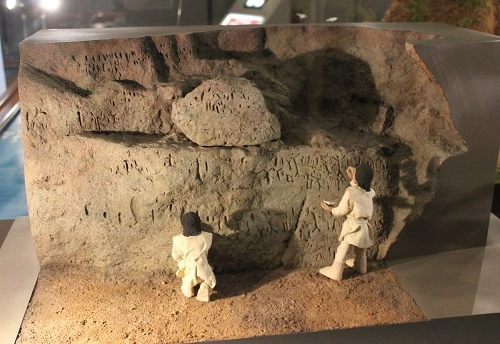

日本の考古学者の皆さん、日本の考古学の新しい記事へようこそ。そうは言っても、気を楽にして始めましょう。 - 1950年代、北海道余市市のフゴッペ洞窟で、縄文時代後期1000年から500年頃の一連の彫刻が発見された。 海水浴のため蘭島を訪れていた札幌市の高校生らが発見した。 これに先立ち、1927年に国鉄函館本線の土塁工事中に9個の彫刻が発見された。 - 洞窟からは動物や魚の骨が多数出土しました。 貝類では二枚貝やカタツムリ、魚類ではヒラメやヒラメなどの沿岸魚からクジラまで、哺乳類ではシカのほか、キツネやタヌキ、オオカミの骨も見つかりました。 - このことからも、当時は食糧が豊富にあり、人々は狩猟や漁業に専念していたことがわかります。 本州で稲作を中心とした弥生文化が発展していた頃、北海道では稲作をする必要はありませんでした。 人を乗せた船の彫刻は北アジアで見られるものと似ていると言われています。 - 気に入っていただければ幸いです。今後の投稿でお会いしましょう。良い一週間をお過ごしください。 - Welcome, Japanesearchaeologicalists, to a new installment of Japanese archaeology. Having said that, make yourself comfortable and let's begin. - In the 1950s, a series of engravings dating from the late Jomon period 1000-500 were discovered in Hokkaido Prefecture in the Fugoppe Cave located in the city of Yoichi. They were discovered by high school students from Sapporo who were visiting Orchid Island to bathe in the sea. Before that, nine carvings were discovered in 1927 during earthworks on the Hakodate main line of the Japanese National Railways. - Many animal and fish bones were excavated in the cave. Shellfish include bivalves and snails, fish range from coastal fish such as flounder and flounder to whales, and mammals include deer, and bones of foxes, raccoon dogs and wolves were also found. - This shows that at that time food was abundant and that people dedicated themselves to hunting and fishing. When the Yayoi culture based on rice cultivation was developing in Honshu, there was no need to grow rice in Hokkaido. The carvings of boats carrying people are said to be similar to those found in northern Asia. - I hope you liked it and we'll see you in future posts and have a good week. - Sean bienvenidos, japonistasarqueológicos, a una nueva entrega de arqueología nipona, una vez dicho esto pónganse cómodos qué empezamos. - En la década de los años 50 se descubrió en la prefectura de Hokkaido en la cueva Fugoppe localizada en la ciudad de Yoichi, se hallaron una serie de grabados que datan del periodo Jomon final 1000-500. Fueron descubiertos por estudiantes de secundaria de Sapporo que visitaban la Isla Orquídea para bañarse en el mar. Antes de eso, se descubrieron nueve tallas en 1927 durante los trabajos de remoción de tierra en la línea principal de Hakodate de los Ferrocarriles Nacionales de Japón. - En la cueva se excavaron muchos huesos de animales y peces. Los mariscos incluyen bivalvos y caracoles, los peces van desde peces costeros como la platija y la platija hasta las ballenas, y los mamíferos incluyen ciervos, y también se encontraron huesos de zorros, perros mapaches y lobos. - Esto demuestra que en aquella época abundaba la comida y que la gente se dedicaba a la caza y la pesca. Cuando la cultura Yayoi basada en el cultivo del arroz se estaba desarrollando en Honshu, no había necesidad de cultivar arroz en Hokkaido. Se dice que las tallas de barcos que transportan personas son similares a las encontradas en el norte de Asia. - Espero que os haya gustado y nos veamos en próximas publicaciones que pasen una buena semana.
El origen de un país y su prehistoria, un paseo por la historia del país del sol naciente. /国の成り立ちと先史、日出ずる国の歴史を歩く。/The origin of a country and its prehistory, a walk through the history of the country of the rising sun.
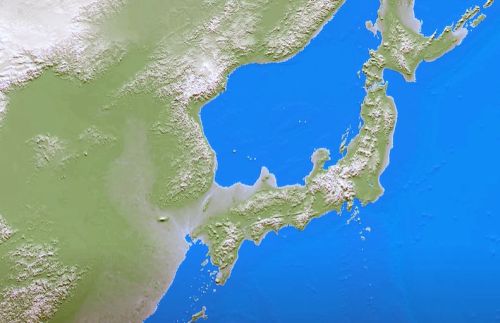

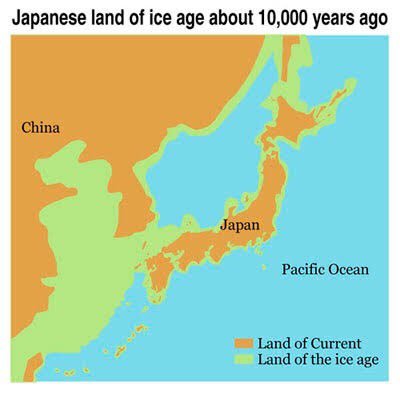

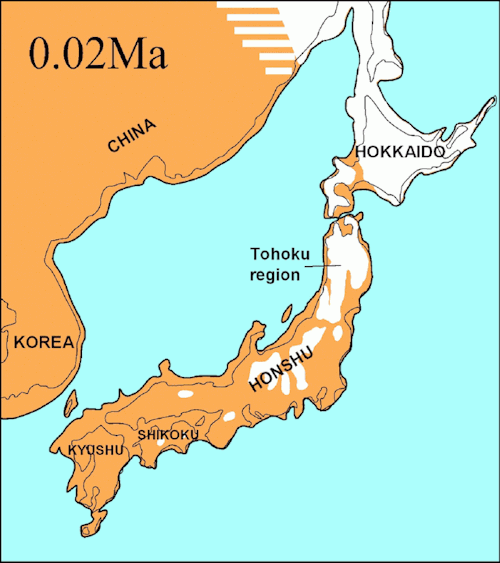

Sean bienvenidos, japonistasarqueológicos, a una nueva entrega de arqueología nipona e historia nipona, una vez dicho esto pónganse cómodos qué empezamos.
-
En los capítulos 1,2,3:Hablamos de: ¿Cuándo llegaron por primera vez los homínidos a Japón? ¿De qué vivían? Hablamos un poco de su geografía, de las cuatro eras glaciales, también se mencionó el holoceno. Empezamos a hablar del pleistoceno, y de cuando empezó la prehistoria de hace 2,5 (esta fecha está desfasada actualmente ronda 4 millones, por los hallazgos de industria lítica) a 7 millones de años. Comentamos algunos homínidos: Homo neanderthalensis, Homo heidelbergensis, homo ergaster entre otros homínidos, comentamos como África es la cuna de la humanidad, y su diversidad de dispersiones migratorias. También se comentó la llegada los homínidos a Okinawa hace 30.000-40.000 años y los Ainus como posibles primeros pobladores. Seguimos hablando del pleistoceno, estuvimos explicando un poco sobre el pleistoceno, se mencionó un poco la formación del archipiélago, mencioné mi posible teoría y al final terminamos con ¿Cómo se llaman las placas tectónicas que forman el archipiélago?
-
Espero que os guste y nos vemos en próximas publicaciones, que pasen una buena semana.
-
日本の考古学者諸君、ようこそ、日本考古学と日本史の新連載へ!さあ、くつろいで、始めよう。
第1章、第2章、第3章では、「ヒト科の動物はいつ日本にやってきたのか?地理、4つの氷河期、完新世についても少し触れました。更新世について話し始め、先史時代が始まった250万年前(この年代は、石器産業の発見により、現在では約400万年古くなっている)から700万年前について話した。ホモ・ネアンデルターレンシス、ホモ・ハイデルベルゲンシス、ホモ・エルガスターなどのホミノイドについて解説し、アフリカが人類発祥の地であること、その移動分散の多様性について述べた。また、3万~4万年前の沖縄へのヒト科動物の到着と、最初の入植者である可能性のあるアイヌ人についても議論した。私たちは更新世について話を続け、列島の形成について少し説明し、私が可能性のある説を述べ、最後にこう締めくくった。 列島を形成しているプレートの名前は?
それではまた、良い一週間を。
-
Welcome, Japanese archaeologists, to a new instalment of Japanese archaeology and Japanese history, so make yourselves comfortable and let's get started.
In chapters 1,2,3:We talk about: When did hominids first arrive in Japan? What did they live on? We talked a little bit about their geography, the four ice ages, the Holocene was also mentioned. We started talking about the Pleistocene, and when prehistory began from 2.5 (this date is now out of date by about 4 million years ago, due to the findings of lithic industry) to 7 million years ago. We commented on some hominids: Homo neanderthalensis, Homo heidelbergensis, homo ergaster among other hominids, we commented on how Africa is the cradle of humanity, and its diversity of migratory dispersions. We also discussed the arrival of hominids in Okinawa 30,000-40,000 years ago and the Ainus as possible first settlers. We continued talking about the Pleistocene, we were explaining a bit about the Pleistocene, the formation of the archipelago was mentioned a bit, I mentioned my possible theory and at the end we finished with What are the names of the tectonic plates that form the archipelago?
I hope you like it and see you in future posts, have a nice week.





Mausoleo Nikko Tosho-gu, construido en el siglo XVII por Iemitsu, sucesor de Tokugawa Ieyasu. Es un lugar compuesto por un horror vacui, horror al vacío, consta con un gran bestiario de animales con un alto lujo de detalles, es un lugar donde se ve, el máximo esplendor del arte tradicional japonés budista y sintoísta en una gran armonía. - Nikko Tosho-gu Mausoleum, built in the 17th century by Iemitsu, successor of Tokugawa Ieyasu. It is a place composed of a horror vacui, horror of emptiness, it consists of a large bestiary of animals with great detail, it is a place where you can see the maximum splendor of traditional Japanese Buddhist and Shinto art in great harmony. - 17世紀、徳川家康の後継者である家光によって建てられた日光東照宮。ホラーヴァクイ、空虚の恐怖で構成された場所であり、細部まで描き込まれた動物の大型獣戯画で構成され、日本の伝統的な仏教美術と神道美術が見事に調和した最大の素晴らしさを見ることができる場所である。 -
Capítulo 4: El origen de un país y su prehistoria, un paseo por la historia del país del sol naciente. - El Pleistoceno: ¿Cómo era el clima en el pleistoceno a través de los registros? Los testigos geológicos y los foraminíferos que nos permiten saber cómo era el clima en aquella época, en Japón era muy húmedo y muy frío, hay que tener en cuenta que las temperaturas actuales no son las mismas que hace 1.2 millones de años. ¿Es verdad, que los humanos en el pleistoceno extinguieron a mucha megafauna? Lo cual es una verdad a medias, ya que el ser humano fue una de las muchas causas, por el hecho de que como las temperaturas fueron uno de los factores claves en sus extinciones, por el hecho de que si una especie necesita de determinada para sobrevivir y el ser humano y el clima acaban con ella, pues, hay tenemos el golpe de gracia. Se sabe que en Hokkaido había Mamuts. El territorio Nippo, estaba unido al continente chino y correano en la zona sur por el estrecho de Tsushima o también denominado Paleo - Honshu y al norte por la isla de Sanjin. Como veíamos en el capítulo anterior, ¿Cómo se llaman las placas tectónicas que forman el archipiélago? Está compuesta por cuatro, Placa del Pasifico, EuroAsiática y NorteAmericana. Esto jugará, un papel fundamental, en la conformación del archipiélago japonés. Como ya mencione en el capítulo 3, posiblemente serían un conjunto de pequeñas islas que se fueron cambiando hasta conformar lo que vemos actualmente como Japón. - Mientras unas se indican, otras emergen y así a la inversa, esto deja registros geológicos. Algunas prefecturas donde se han encontrado restos humanos: prefecturas de Hyogo Shizuoka. - Chapter 4: The origin of a country and its prehistory, a walk through the history of the country of the rising sun. - The Pleistocene: What was the climate like in the Pleistocene across records? The geological witnesses and foraminifera that allow us to know what the climate was like at that time, in Japan it was very humid and very cold, we must take into account that current temperatures are not the same as 1.2 million years ago. Is it true that humans in the Pleistocene extinct many megafauna? Which is a half truth, since the human being was one of the many causes, due to the fact that since temperatures were one of the key factors in their extinctions, due to the fact that if a species needs a certain amount to survive and the human being and the climate put an end to it, well, there we have the coup de grace. It is known that there were Mammoths in Hokkaido. The Nippo territory was joined to the Chinese and Correan continent in the south by the Strait of Tsushima or also called Paleo-Honshu and to the north by the island of Sanjin. - As we saw in the previous chapter, what are the names of the tectonic plates that form the archipelago? It is made up of four, Pacific, Euro-Asian and North American Plates. This will play a fundamental role in the formation of the Japanese archipelago. As I already mentioned in chapter 3, they were possibly a set of small islands that changed until they formed what we currently see as Japan. While some are indicated, others emerge and so on, this leaves geological records. Some prefectures where human remains have been found: Hyogo Shizuoka prefectures. - 第4章 国の成り立ちと先史、日出ずる国の歴史を歩く。 - 更新世: 記録に残る更新世の気候はどのようなものでしたか? 地質学的証拠と有孔虫は、当時の日本がどのような気候であったかを知ることを可能にします。日本は非常に湿気が多く、非常に寒かったため、現在の気温は 120 万年前と同じではないことを考慮する必要があります。 更新世の人類が多くの巨大動物を絶滅させたというのは本当ですか? これは半分真実です。なぜなら、温度が絶滅の重要な要因の1つであるという事実、そして種が生き残るためにある程度の量が必要であるという事実のため、人間は多くの原因の1つであるからです。人間と気候がそれに終止符を打ったのです。まあ、ここで私たちは幸運をもたらしました。 北海道にはマンモスがいたことが知られています。 日豊領土は、南は対馬海峡、または古本州とも呼ばれ、北は三津島によって中国大陸とコレリア大陸につながっていました。 - 前の章で見たように、列島を形成する構造プレートの名前は何ですか? 太平洋プレート、ヨーロッパ・アジアプレート、北米プレートの4枚で構成されています。 それは日本列島の形成に根本的な役割を果たします。 第 3 章ですでに述べたように、それらはおそらく、私たちが現在日本として見ているものを形成するまでに変化した小さな島の集まりであった可能性があります。 示されているものもあれば、出現しているものもあり、これにより地質学的記録が残ります。 人骨が発見された都道府県: 兵庫県 静岡県。 -


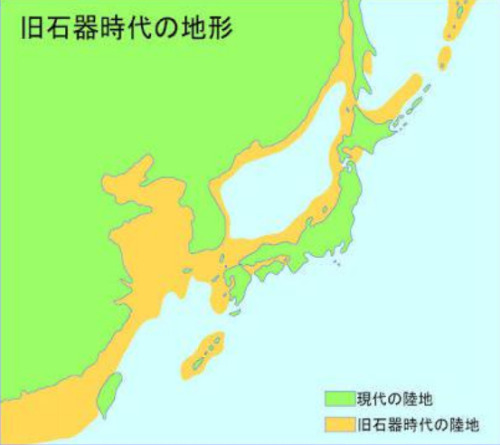

コストコ予定地で「遺構を一般公開せず埋めた」報道 市教委「法律違反かの印象与える記事は心外」...朝日新聞の見解は
-


Report on 'remains buried without public access' at planned Costco site, City Board of Education: 'It is disturbing to read an article that gives the impression that it is against the law…'… What is the Asahi Shimbun's view?


Capítulo 3: El origen de un país y su prehistoria, un paseo por la historia del país del sol naciente.
-
El Pleistoceno:
-
Sean bienvenidos, a una nueva serie, de arqueología prehistórica, en esta ocasión, nos trasladamos al país del sol naciente. En los capítulos anteriores hablamos de: ¿Cuándo llegaron por primera vez los homínidos a Japón? ¿De qué vivían?, hablamos algo de su geografía, aunque no todo lo que a mí me hubiera gustado, por eso en este episodio y en los venideros la iremos analizando y como conformó la prehistoria japonesa hasta su final, también comentamos el inicio de la prehistoria humana a nivel global y de los primeros humanos de africanos que hablamos de forma superficial, también hablamos de ¿Quiénes habitaban Japón cuando ellos llegaron? Y de ¿cuándo llegaron? Respondimos a las preguntas de forma sintética, en los siguientes capítulos hablaremos más de cada uno de ellos en profundidad, como es debido dicho esto pónganse cómodos que empezamos.
-
El pleistoceno fue un periodo glacial en el cual los casquetes polares eran enormes, no toda la tierra estaba cubierta como se ha hecho creer, había zonas con praderas, una vez aclarado esto damos paso a la geografía que la abordaremos unos cuantos episodios para entender mejor su historia, prehistoria entre otros temas.
-
Geografía nipona en la prehistoria:¿Cuándo se formó el archipiélago japonés? Hay dos teorías, la primera dice que lo más probable es que se formaran por partes cada una de las cuatro grandes islas y otra dice que salieron directamente de una sola formación, es decir, que las placas tectónicas en un solo sismo salieron las cuatro islas¿Qué opinan ustedes? Lo que sí se sabe es que hokkaido se formó de una tajada hace 20 millones de años, yo aporto una tercera teoría que hubiera pequeñas islas y que a raíz de lay se formará el resto de las islas, japón se sitúa en el cinturón de fuego, lo que lo convierte en un objetivo de las actividades volcánicas ¿Cómo se llaman las placas tectónicas que forman el archipiélago? Esta pregunta y muchas más la veremos en los próximos capítulos.
-
Vamos a dividir este capítulo en sus epígrafes para poder hablar de la geografía gracias por valorarlo. -
第3章 国の成り立ちと先史、日出ずる国の歴史を歩く。 - 更新世: - 先史考古学の新しいシリーズへようこそ。この機会に、私たちは日出ずる国に移ります。 前の章では、ヒト科が初めて日本に到達したのはいつですか? 彼らは何を食べて暮らしていたのでしょうか?私たちは彼らの地理について少し話しましたが、私が望んでいたすべてではありませんでしたので、このエピソードと今後のエピソードではそれを分析し、それが終わりに至るまで日本の先史時代をどのように形作ったのか、また、古代の始まりについても説明します。世界レベルでの人類先史と、私たちが表面的に語る最初のアフリカ人についても話しますが、彼らが到着したとき、誰が日本に住んでいたのかについても話します。 そして彼らはいつ到着しましたか? 私たちは総合的な方法で質問に答えました。次の章では、それぞれの質問について詳しく説明します。言うまでもなく、安心して始めましょう。 - 更新世は、極冠が巨大だった氷河期で、信じられているように地球全体が覆われていたわけではなく、草原のある地域もありました。これが明らかになると、地理の問題に道が譲られます。これについては、いくつかのエピソードで取り上げます。その歴史、先史時代などのトピックをより深く理解するために。 - 先史時代の日本の地理: 日本列島はいつ形成されたか? 2つの理論があり、1つは4つの大きな島がそれぞれ部分的に形成された可能性が最も高いというもので、もう1つは単一の地層から直接生じたもの、つまり1回の地震でプレートが残ったものであるというものです。四島についてどう思いますか? 知られているのは、北海道は2000万年前に一片に形成されたということである。私は、小さな島々が存在し、その結果として残りの島々が形成されるだろうという3番目の理論を提供する。日本は火の輪の中に位置している。列島を形成するプレートを何というでしょう? この質問とさらに多くの質問を次の章で見ていきます。 - 地理についてお話しできるよう、この章をエピグラフに分割する予定です。ご評価いただきありがとうございます。
-
Chapter 3: The origin of a country and its prehistory, a walk through the history of the country of the rising sun.
The Pleistocene:
Welcome to a new series of prehistoric archeology, on this occasion, we move to the country of the rising sun. In the previous chapters we talked about: When did hominids first arrive in Japan? What did they live on? We talked a little about their geography, although not everything I would have liked, so in this episode and in future ones we will analyze it and how it shaped Japanese prehistory until its end, we also discuss the beginning of human prehistory at a global level and the first African humans that we talk about superficially, we also talk about Who inhabited Japan when they arrived? And when did they arrive? We answered the questions in a synthetic way, in the following chapters we will talk more about each of them in depth, as it should be said, make yourself comfortable and let's begin.
The Pleistocene was a glacial period in which the polar caps were enormous, not all the earth was covered as it has been believed, there were areas with grasslands, once this is clarified we give way to geography, which we will address in a few episodes to understand better. its history, prehistory among other topics.
Japanese geography in prehistory: When was the Japanese archipelago formed? There are two theories, the first says that it is most likely that each of the four large islands were formed in parts and the other says that they came out directly from a single formation, that is, that the tectonic plates in a single earthquake left the four islands. What do you think? What is known is that Hokkaido was formed in one slice 20 million years ago, I provide a third theory that there were small islands and that as a result of this the rest of the islands will be formed, Japan is located in the ring of fire , making it a target for volcanic activities. What are the tectonic plates that form the archipelago called? We will see this question and many more in the next chapters.
We are going to divide this chapter into its epigraphs to be able to talk about geography, thank you for valuing it.

Sean bienvenidosfanaticosarqueológicos a una nueva noticia arqueológica del país del sol naciente ¿Dé que trata dicha noticia? Pues a continuación sin más demora os traigo un supernotición del periodo Asuka(592-710).
-
Se han descubierto unos restos arqueológicos que datan del año 650 hace unos 1300 años de antigüedad en la antigua ciudad de Asuka en la prefectura de Nara, para la próxima publicación hablaremos de las prefecturas, aunque sea un resumen.
-
¿Quién ha encontrado estos restos arqueológicos? Fueron encontrados por el Instituto Arqueológico de Kashihara del que ya hablaremos próximamente. ¿Cuál era el uso de este canal? Serviría para desviar el agua que se desbordaba para llenar el estanque que os dejaré una ilustración del mismo.
-
Las piedras tienen un diámetro de 6 metros, las cuales están pavimentadas. Desde luego una gran obra hidráulica para su época. - Os deseo un feliz día y nos vemos en próximas publicaciones un cordial saludo.
-
考古学ファンの皆様、日出ずる国からの新しい考古学ニュースへようこそ。このニュースは何についてのものですか? さて、早速、飛鳥時代(592年~710年)のスーパーニュースをお届けします。
-
古都奈良県の飛鳥市で約1300年前の650年頃の遺跡が発見されたが、次回はまとめではあるが都道府県の話をしたいと思う。 - 誰がこれらの遺跡を発見したのでしょうか? それらは橿原考古学研究所によって発見されました。これについては後ほど説明します。 このチャンネルの用途は何ですか? これは、溢れ出た水を池に流すのに役立ちます。その図を残しておきます。
-
直径6メートルの石が敷き詰められている。 確かに当時としては素晴らしい水圧作業でした。
-
幸せな一日をお祈りいたします。また今後の出版物でお会いしましょう。心からご挨拶申し上げます。
-


Welcome archaeological fans to a new archaeological news from the country of the rising sun. What is this news about? Well, without further delay, I bring you a super news from the Asuka period (592-710).
-
Archaeological remains dating back to the year 650, about 1,300 years ago, have been discovered in the ancient city of Asuka in Nara Prefecture. For the next publication we will talk about the prefectures, even if it is a summary.
-
Who found these archaeological remains? They were found by the Kashihara Archaeological Institute, which we will talk about soon. What was the use of this channel? It would serve to divert the water that was overflowing to fill the pond, which I will leave you with an illustration of.The stones have a diameter of 6 meters, which are paved. Certainly a great hydraulic work for its time.
-
I wish you a happy day and see you in future publications, cordial greetings.


Capítulo 2: El origen de un país y su prehistoria, un paseo por la historia del país del sol naciente. El Pleistoceno Sean bienvenidos, a una nueva serie, de arqueología prehistórica en esta ocasión, nos trasladamos al país del sol naciente. En el capítulo anterior, estuvimos dando una pequeña introducción, de la prehistoria nipona, ha llegado la hora de matizar más en profundidad cada apartado.
-
En este capítulo, nos vamos a centrar en el pleistoceno, para entender la evolución meteremos, algunos contextos del mundo para que puedan ir comprendiendo el pleistoceno japonés del resto del mundo. La prehistoria humana comienza hace unos 2,5 a 7 millones de años aproximadamente, los primeros homínidos, salieron de África, Como son el caso de: Homo neanderthalensis, Homo heidelbergensis, Homo ergaster entre otros homínidos.
-
Sabemos que los primeros homínidos, que salieron de la cuna de áfrica, fueron los homo habilis y erectus los cuales se fueron desplazando por los distintos continentes, pasando primero por la zona de la península del Sinaí y luego pasaron por el corredor siro palestino.
-
En el capítulo anterior, salió la pregunta¿Cómo llegaron los primeros homínidos al archipiélago? Llegaron hace unos 30.000 a 90.000 aproximadamente, han salido recientes estudios arqueológicos, en respecto a esta parte, la cual ya os la comentaré en una noticia arqueológica, ¿De qué medio disponían?, probablemente, a través de canoas o balsas llegando así a la zona de Okinawa, ¿Quiénes habitaban Japón cuando ellos llegaron?, pues los Ainu, ¿cuándo llegaron?, aproximadamente hace unos 110.000 y 10.000 años antes de cristo.
-
Este capítulo lo vamos a tener que ir dividiendo en partes para irlo trabajando poco a poco. Espero que os haya gustado y nos vemos en el siguiente capítulo. Un fuerte abrazo.
Tanque japonés, abatido por tropas norteamericanas, agosto del 42, guerra del Pacífico./Japanese tank, shot down by North American troops, August 42, Pacific War./米軍によって撃墜された日本の戦車(42年8月、太平洋戦争)。

Una espada con alma propia./自らの魂を宿した剣。/A sword with its own soul. La katana o (sable japonés) japonesa es un elemento, único en el mundo, porque para los samuráis la espada era su alma y perderla era todo un deshonor. La katana japonesa surge el siglo VIII, periodo Heian, pero en el periodo entre el 1192 y el 1336, durante el periodo Kamakura, la producción de espadas se amplió bastante. - 日本刀は世界でも類を見ない要素です。サムライにとって刀は魂であり、それを失うことは完全な不名誉だからです。 日本刀は平安時代の8世紀に誕生しましたが、鎌倉時代の1192年から1336年にかけて刀剣の生産は大幅に拡大しました。 - The Japanese katana or (Japanese sword) is an element, unique in the world, because for the samurai the sword was their soul and losing it was a complete dishonor. The Japanese katana emerged in the 8th century, Heian period, but in the period between 1192 and 1336, during the Kamakura period, the production of swords expanded considerably.

#history #archaeology #japan #blog #presentation
Sean bienvenidos, a una publicación de presentación, en este blog iremos subiendo contenido de Japón sobre arqueología, historia y cualquier cosita, espero que os guste y nos vemos pronto.
-
Welcome to an introductory post, in this blog we will be uploading content from Japan about archaeology, history and anything else, I hope you like it and see you soon.
-
このブログでは、考古学や歴史など、日本からのコンテンツをアップしていきます。
First, I was excited because she literally ended the Hundred Years' war.
Then, I was really mad because she was burned at the stake for that.
And now I'm fine again, because it were the English who killed her and not the French.
And she was declared a martyr, beatified and canonized later.
Just went on an emotional roller-coaster ride learning about Joan of Arc (Jeanne d'Arc)

